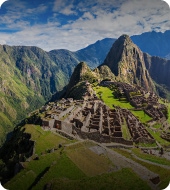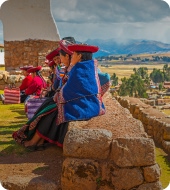
4 Tips on How to Hike Sustainably in Peru
Written by:
Last Update: 2025-02-09
Sustainability has become increasingly important as we try to be environmentally conscious and take care of our planet Earth. Hiking is one of the best ways to interact with nature in an eco-friendly way.
Peru has so much history, culture, beautiful fauna, and flora to appreciate. You can learn more about the rich ancient history that lies within the walls of the mountains and connect with local communities.
Whether you’re thinking about taking a trip to hike in Peru or you’re already on your way, we’ve made a list of tips on how you can make your trip more sustainable.
Hiking the Inca Trail Trek to Machu Picchu
What Does Sustainable Hiking Mean?
Sustainable hiking is a form of sustainable tourism. The Global Sustainable Tourism Council defines sustainable tourism as participating in sustainable practices in and by the tourism industry. This includes considering all the impacts of tourism and making an effort to minimize negative impacts while maximizing positive ones.
Some positive impacts of sustainable tourism practices could include:
- Creating jobs for locals in surrounding communities
- Preserving the history and cultures of local communities
- Preserving wildlife
Tourism can negatively impact local communities and the environment if sustainable practices aren’t followed.
Eco-tourism and responsible traveling also fall within similar guidelines of sustainable tourism. Eco-tourism involves non-consumptive and locally oriented behaviors to have a low impact on the natural area of a destination.
Responsible traveling involves acknowledging sustainable practices to maximize the positive impacts individual travelers could have on a tourist destination while limiting the negative impacts.
Why Sustainable Tourism is Important
Sustainable tourism is essential for several reasons. It helps preserve the history and cultures of local communities while supporting them.
Sustainable practices allow people to continue traveling to tourist destinations while uplifting the area. Tourism businesses can allocate some of their profits to help local communities and conservation efforts, which positively impacts the destination.
How to Hike Sustainably in Peru
Hiking Around Machu Picchu on a Circuit
One can follow several sustainable practices to make their hiking trip to Peru more sustainable. At Valencia Travel, we’re dedicated to fostering positive relationships through sustainable practices to connect people worldwide.
The following list includes tips on choosing a sustainable hiking tour and steps you can take to be environmentally conscious while exploring the landscapes of Peru.
Choose an Environmentally-Conscious Tour Operator
If you plan on using a tour operator to help you plan a hiking trip in Peru, you might want to consider a tour operator that participates in sustainable practices.
Choosing an environmentally-conscious tour operator can help you plan a more sustainable hiking adventure. Some of our main sustainable efforts include cultural preservation, empowering local communities, reducing our carbon footprint, and protecting wildlife.
Be Respectful of Plants and Wildlife
While hiking in Peru, you might have the opportunity to come across various wildlife. Trails are also surrounded by native plant species and delicate flowers. It’s important not to disturb wildlife or plants while trekking along trails.
Respecting wildlife is one of the seven Leave No Trace principles. Disturbing wildlife by getting close to animals or trying to feed or pick up wildlife can cause stress. This can affect the health of many animals.
Even if you find a pretty flower or unique rock, it’s best to leave these things where they belong.
Happy "Mapi" Llama!
Dispose of Waste Properly
When planning your hiking trip, you might want to consider the items and food you want to bring along. This can help you plan how to store trash and reduce the amount of trash you’ll accumulate.
Littering is extremely harmful to the environment and can be dangerous to wildlife. Leaving bits of food or trash along trails can attract wildlife from their home range and even endanger other travelers. Designate a bag to carry that’s for your trash and dispose of it at a proper site.
Even though some foods like fruit peels are biodegradable, they can still take a long time to break down. Therefore, it’s best to dispose of trash or leftover food in your bag until you can dispose of it properly.
Follow Proper Trail Etiquette
When trekking on trails, practicing proper trail etiquette can help you have a more sustainable hike. Trail etiquette includes staying on the trail, following trail signs, stepping aside to let other hikers pass, and being mindful of trail conditions.
Keep to the Trail!
Staying on the trail helps to prevent trail and habitat degradation. Be sure to follow any trail signs that may be posted on trails as well. Signs can have important information for hikers and rules that should be followed.
Stepping aside for other hikers is trail etiquette because it prevents trail and habitat degradation. It allows hikers to pass each other without having to step off the trail too far or travel off the beaten path.
Hikers traveling uphill usually have the right-of-way. Therefore, hikers traveling downhill should stop and step to the side to allow uphill hikers to pass on the trail. Hikers traveling at a slower pace can also step aside to allow hikers moving faster to pass.
 Aventure
Aventure
 Cultural
Cultural
 Gastronomy
Gastronomy
 Wellness
Wellness
 Local Living
Local Living
 Luxury
Luxury











